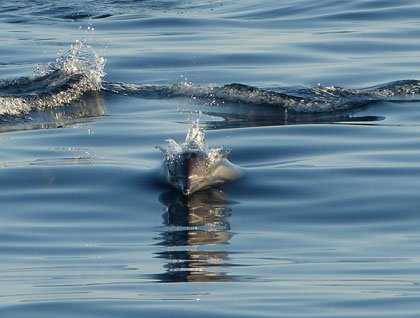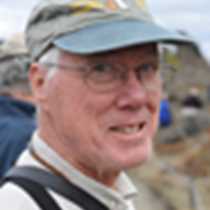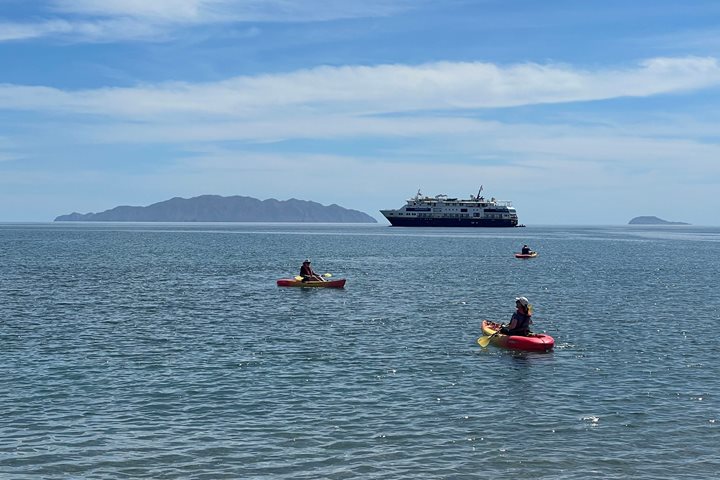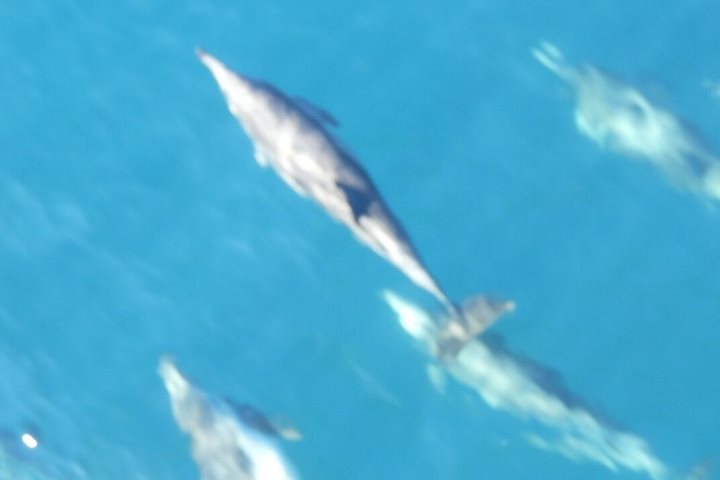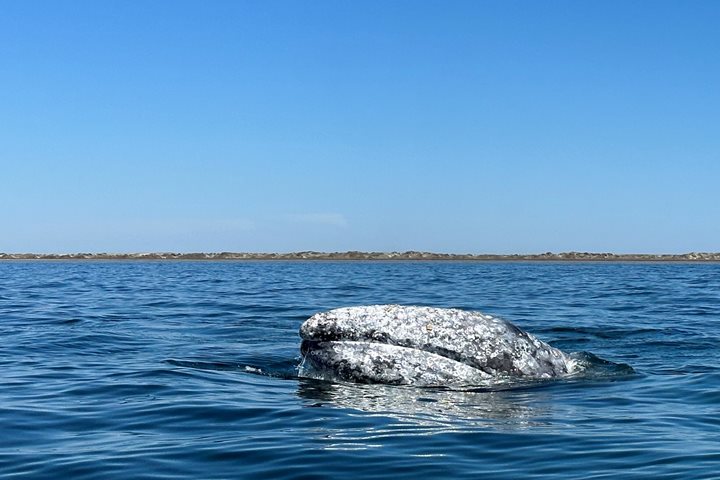Today we did it all. At dawn, we were within sight of Isla San Jose, watching the sunrise over a perfectly calm Gulf of California, the sea surface like liquid glass. The morning sunlight reflected off of the banded volcanic deposits of the Sierra de la Giganta (the mountains of the Giantess) on the Baja California Peninsula, to the west of us. They were deposited when the present Peninsula of Baja California was still a part of the Mexican mainland.
A disturbance in the distance broke the surface calm. It approached us until we could see dark forms breaking through the surface and then returning to the water below. We had encountered a large group of long-beaked common dolphins. It is so difficult to estimate group size, since we see them only in their brief airborne moments. Surely, they numbered in the hundreds. (Digression: what is the appropriate collective term for dolphins? ... a school? ... a pod? ... a herd? This writer prefers "buncha," as in "a whole buncha dolphins"; but that one was a hard sell.) Cameras clicked, and cries of glee sounded when the dolphins joined us to ride the bow wave or the wake from the stern of the National Geographic Sea Bird; or when several dolphins leaped in apparent synchrony; or when a mother and her small dolphin baby were seen swimming in tandem. In reviewing my photos of the event, I am most struck by the reflections and the texture of the water. What a wonderful beginning to our day in the Gulf of California.
We landed at Punta Colorada ("red point") on Isla San Jose for walks up a desert arroyo. Most of this island is of gray granite, but here we find a deposit of deep red sandstone, replete with shells of animals that lived long ago, and topped by a deep deposit of volcanic ash. The colorful landscape has been sculpted by wind and the periodic rushes of water that flows down the arroyo following infrequent but intense rainfall events. Evidence of the last rainfall remains in the flowers that we found on some of the desert plants. Following our walks, we turned to water sports. Some chose to kayak in a quiet cove. Others opted to snorkel with colorful fish in an amphitheater carved into the red rock of Punta Colorada, a most spectacular setting, indeed.
As we moved to our afternoon destination of Isla San Francisco, our National Geographic representative and photographer extraordinaire, Flip Nicklin, described how a story is put together for the magazine. Fascinating. For the afternoon at Half Moon Bay on Isla San Francisco, we were free to wander, to grab a kayak for a quiet paddle, to return to the water for more snorkeling, all of the above or in any combination. All the while, our crew was busy preparing a barbecue dinner to be served on the beach. As the light faded and myriad stars came out to light the Baja California sky, we gathered around the campfire to hear tales of another era, when the Aztecs and their Gods ruled the earth.

